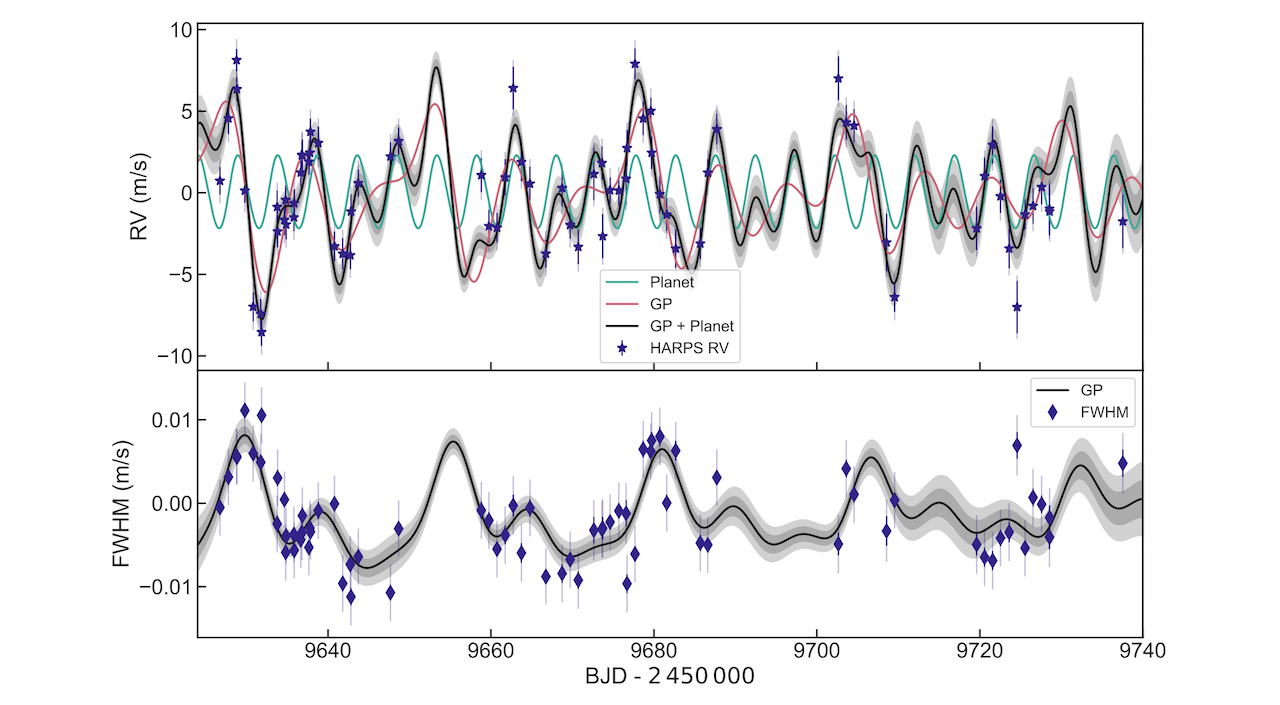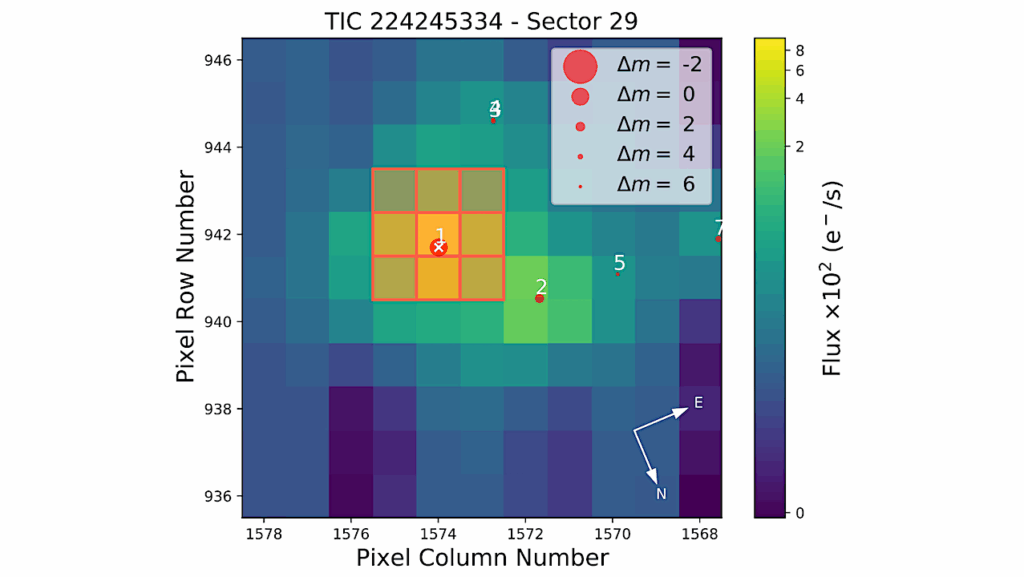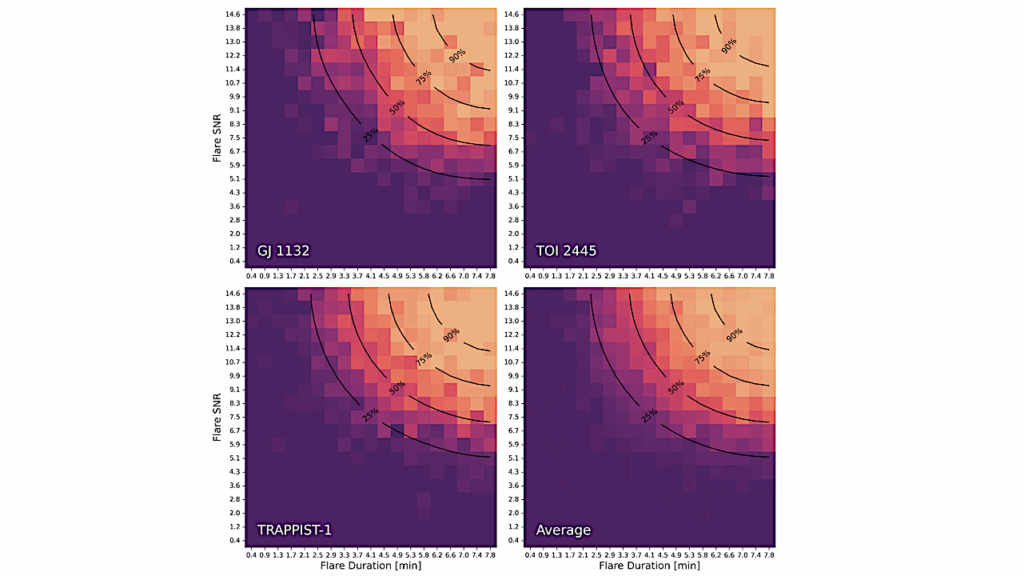TOI-733 b – A Planet In The Small-planet Radius Valley Orbiting A Sun-like Star

We report the discovery of a hot (Teq ≈ 1055 K) planet in the small planet radius valley transiting the Sun-like star TOI-733, as part of the KESPRINT follow-up program of TESS planets carried out with the HARPS spectrograph. TESS photometry from sectors 9 and 36 yields an orbital period of Porb = 4.884765+1.9e−5−2.4e−5 days and a radius of Rp = 1.992+0.085−0.090 R⊕.
Multi-dimensional Gaussian process modelling of the radial velocity measurements from HARPS and activity indicators, gives a semi-amplitude of K = 2.23±0.26 m s−1, translating into a planet mass of Mp = 5.72+0.70−0.68 M⊕. These parameters imply that the planet is of moderate density (ρp = 3.98+0.77−0.66 g cm−3) and place it in the transition region between rocky and volatile-rich planets with H/He-dominated envelopes on the mass-radius diagram.
Combining these with stellar parameters and abundances, we calculate planet interior and atmosphere models, which in turn suggest that TOI-733 b has a volatile-enriched, most likely secondary outer envelope, and may represent a highly irradiated ocean world – one of only a few such planets around G-type stars that are well-characterised.
Iskra Y. Georgieva, Carina M. Persson, Elisa Goffo, Lorena Acuña, Artyom Aguichine, Luisa M. Serrano, Kristine W. F. Lam, Davide Gandolfi, Karen A. Collins, Steven B. Howell, Fei Dai, Malcolm Fridlund, Judith Korth, Magali Deleuil, Oscar Barragán, William D. Cochran, Szilárd Csizmadia, Hans J. Deeg, Eike Guenther, Artie P. Hatzes, Jon M. Jenkins, John Livingston, Rafael Luque, Olivier Mousis, Hannah L. M. Osborne, Enric Palle, Seth Redfield, Vincent Van Eylen, Joseph D. Twicken, Joshua N. Winn, Ahlam Alqasim, Kevin I. Collins, Crystal L. Gnilka, David W. Latham, Hannah M. Lewis, Howard M. Relles, George R. Ricker, Pamela Rowden, Sara Seager, Avi Shporer, Thiam-Guan Tan, Andrew Vanderburg, Roland Vanderspek
Comments: Accepted for publication in A&A
Subjects: Earth and Planetary Astrophysics (astro-ph.EP)
Cite as: arXiv:2304.06655 [astro-ph.EP] (or arXiv:2304.06655v1 [astro-ph.EP] for this version)
Submission history
From: Iskra Georgieva
[v1] Thu, 13 Apr 2023 16:35:36 UTC (3,171 KB)
https://arxiv.org/abs/2304.06655
Astrobiology








